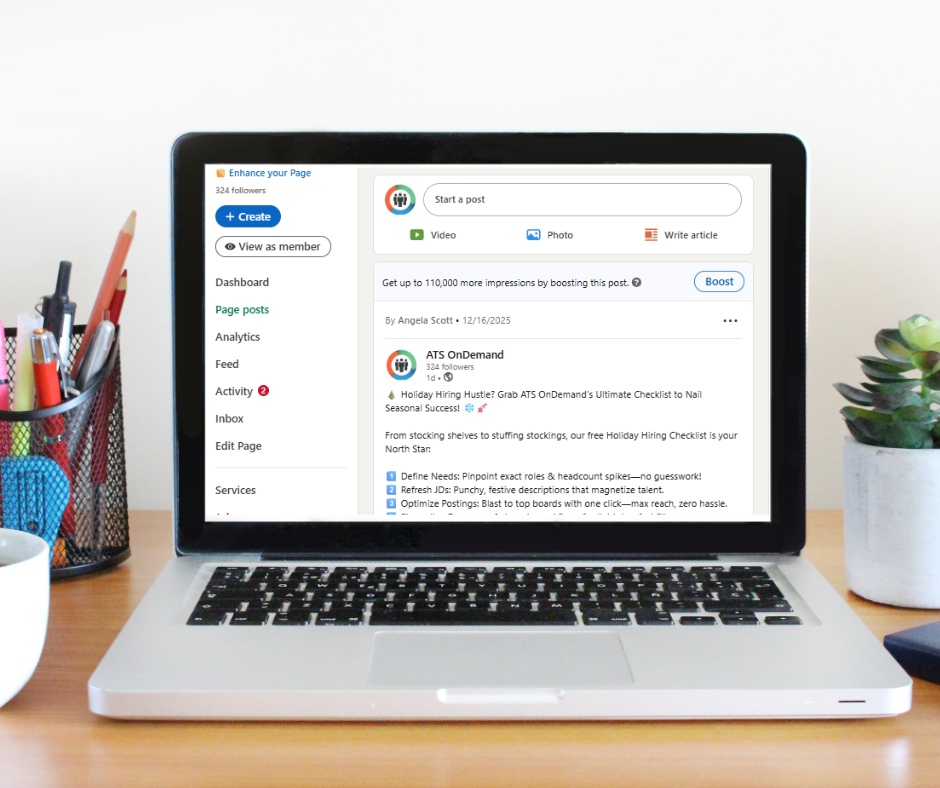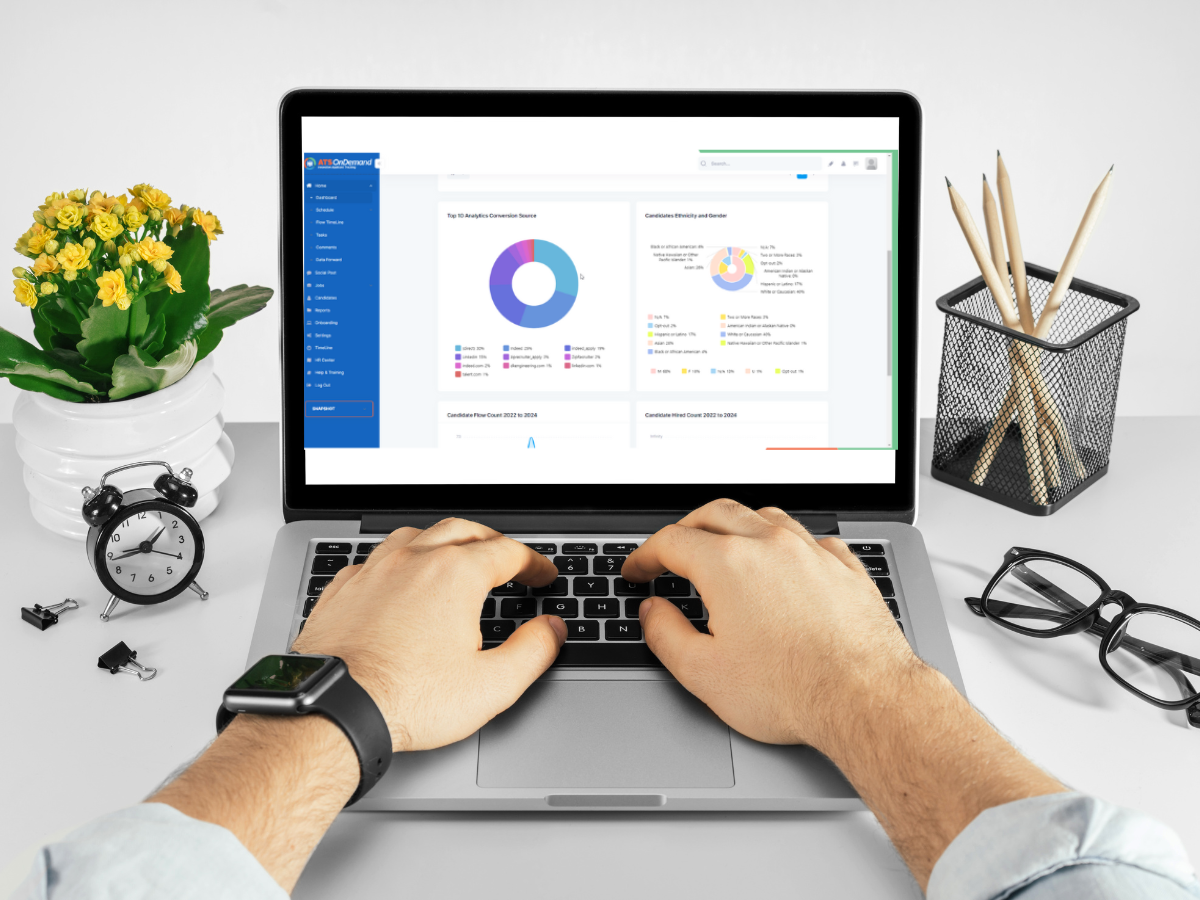In 2025, businesses are increasingly relying on data-driven decision-making to optimize their recruitment efforts. Reports and metrics in an applicant tracking system (ATS) play a crucial role in assessing the effectiveness of hiring strategies, improving recruitment processes, and ensuring a seamless candidate experience. Here are the top 5 metrics to measure success in your ATS:
1. Time to Fill
Why it matters: Time to fill is the total time it takes to hire a candidate from the moment the job requisition is opened to when the candidate accepts the offer. A shorter time to fill indicates an efficient recruitment process, which is critical for reducing operational downtime and maintaining a competitive edge.
Why metrics are important: By tracking this metric, you can pinpoint inefficiencies in the hiring process (e.g., long interview cycles, delays in decision-making) and address bottlenecks that are hindering faster placements. Additionally, you can compare this data across different job roles, teams, or departments to see where improvements are needed.
2. Quality of Hire
Why it matters: Quality of hire measures the performance and contribution of new hires over time. It involves evaluating whether your recruitment efforts are attracting top talent that aligns with company values and delivers strong job performance.
Why metrics are important: Quality of hire is typically tracked through performance reviews, employee retention rates, and feedback from managers. ATS reports help assess the long-term impact of your hiring decisions, revealing patterns about which recruiting channels and processes yield the highest quality candidates.
3. Source of Hire
Why it matters: Understanding which sources (job boards, social media, employee referrals, etc.) yield the best candidates allows you to allocate resources more effectively. This metric provides insight into where to focus your recruiting efforts for maximum return on investment.
Why metrics are important: ATS systems generate detailed reports on candidate sources, which can guide your future recruitment marketing strategies. By identifying high-performing sources, you can refine your approach to talent acquisition and increase the likelihood of finding qualified candidates faster.
4. Candidate Experience
Why it matters: Candidate experience encompasses every interaction a candidate has with your company during the recruitment process. A positive experience can improve your employer brand, increase the likelihood of offers being accepted, and improve overall recruitment outcomes.
Why metrics are important: ATS platforms often allow you to collect feedback from candidates via surveys after interviews or offer rejection. Monitoring candidate experience metrics, such as response time, communication clarity, and ease of applying, helps you identify areas where your recruitment process can be more candidate-friendly.
5. Offer Acceptance Rate
Why it matters: This metric reveals how many of your offers are accepted by candidates compared to how many are extended. A high offer acceptance rate indicates that your recruiting process is successful not only in attracting the right talent but also in persuading them to join your company.
Why metrics are important: Tracking offer acceptance rates through ATS reports allows you to identify any trends that may suggest issues with salary offers, job role clarity, or organizational reputation. Additionally, this data helps fine-tune your offer strategy and recruitment negotiation processes.
The Importance of Metrics in Applicant Tracking:
- Data-Driven Decisions: ATS reports provide measurable insights into the effectiveness of recruitment activities, allowing for continuous improvement. You can easily evaluate which recruiting channels and methods work best for attracting top talent.
- Identifying Bottlenecks and Improving Efficiency: By analyzing metrics like time-to -fill and candidate drop-off points, you can identify inefficiencies in the hiring process and streamline operations.
- Enhancing Candidate and Hiring Manager Satisfaction: Detailed feedback and metrics can lead to a better candidate experience, which positively impacts your employer brand. Similarly, hiring managers can use reports to understand the performance of the recruitment team and adjust expectations.
- Resource Allocation: Reports help you assess where to allocate resources more effectively—whether that means investing more in a successful recruitment channel or optimizing an underperforming stage of the hiring process.
In summary, ATS OnDemand’s reporting and analytic feature provides a powerful tool for tracking and measuring the impact of your recruitment strategies. It allows you to easily identify areas for improvement and make informed, data-driven decisions that can enhance your hiring outcomes. With a variety of customizable reports and the ability to build your own, ATS OnDemand ensures that your organization can access the exact metrics needed to optimize your recruitment process and achieve success in attracting and retaining top talent. This flexibility gives your team the best chance to gather the insights necessary for continuous improvement.




